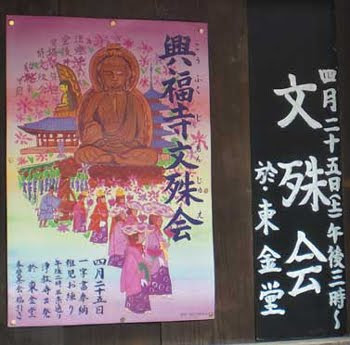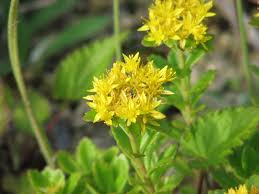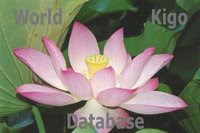[ . BACK to Worldkigo TOP . ]
:::::::::::::::::::::::::::::::::::::::::::::::::::::::::::::::::::::::::::::::::::::::::::::::::::::
Rice gruel (kayu)
***** Location: Japan
***** Season: Various, see below
***** Category: Humanity, Observance
*****************************
Explanation
Rice Gruel, rice porridge, congee ...

Rice may also be made into rice
porridge (also called
congee or rice gruel) by adding more water than usual, so that the cooked rice is saturated with water to the point that it becomes very soft, expanded, and fluffy. Rice porridge is commonly eaten as a breakfast food, and is also a traditional food for the sick.
© More in the WIKIPEDIA !
WASHOKU
zoosui 雑炊 rice porridge with other ingredients
Reisbrei mit weiteren Zutaten
kigo for all winter
:::::::::::::::::::::::::::::::::::::::::::::::::::::::::::::::::::::::::::::::::::::::::::::::::::::
Summer
late summer
gesai no on kayu 解斎の御粥 (げさいのおんかゆ)
gesai kayu 解斎粥(げさいかゆ)
This ritual dates back to the Heian period.
On the 12th day of the sixth month of the lunar calendar, the emperor is relieved from his vow not to eat fish or meat (kessai) and the
inbi no gohan ceremonies come to an end.
The first thing he eats is this rice gruel.
The gruel is served in an earthen pot, with some wakame soup. He eats three mouthful and then sticks his chopsticks into the rest.
This rice gruel was not soft as it is now, but hard to be eaten with chopsticks.
. inbi no gohan 忌火の御飯 (いんびのごはん)
"rice on the memorial day"
more details are here
kessai けっさい【潔斎】
purify oneself by abstaining from fish and meat
:::::::::::::::::::::::::::::::::::::::::::::::::::::::::::::::::::::::::::::::::::::::::::::::::::::
Autumn
early autumn
O-bana no kayu 尾花の粥
..... obana gayu 尾花粥(おばながゆ), obanagayu小花粥(おばながゆ)
..... susuki gayu 薄粥(すすきがゆ)
Rice gruel with susuki grass ears
:::::::::::::::::::::::::::::::::::::::::::::::::::::::::::::::::::::::::::::::::::::::::::::::::::::
Winter
early winter
the 10th night, juuya 十夜 (じゅうや)
prayer night of the Jodo sect of Pure Land Buddhism
Often on November 9th.
honorable tenth night, o juuya 御十夜(おじゅうや)
tenth night ritual, juuya hooyoo 十夜法要(じゅうやほうよう)
gruel at the tenth night, juuya gayu
十夜粥(じゅうやがゆ)
prayer gongs at the 10th night, juuya gane 十夜鉦(じゅうやがね)
temple with ceremonies at the 10th night, juuya dera
十夜寺(じゅうやでら)
monk at the 10th night, juuya soo十夜僧(じゅうやそう)
old woman at the 10th night, juuya baba
十夜婆(じゅうやばば)
persimmons for the 10th night, juuya gaki
十夜柿(じゅうやがき)
:::::::::::::::::::::::::::::::::::::::::::::::::::::::::::::::::::::::::::::::::::::::::::::::::::::
kigo for mid-winter
"Gruel for Priest Chi-E", Chie gayu, Chie-gayu 智慧粥
"Great Master's Gruel", Daishi gayu 大師粥
gruel on the 18th day, juuhachi gayu 十八粥
fuguri gayu ふぐり粥(ふぐりがゆ

In some areas, wheat noodles with red beans are also added to the gruel. Some people eat it on all the days with a
4 in December.
Other kigo related to this ceremony,
celebrated at Mt. Hiei-zan from November 23 to 24 in memory of the founder, Dengyo Daishi:
Prayer group for the Great Master, daishi koo
大師講 だいしこう
Memorial day for Tendai Daishi, Tendai Daishi Ki
天台大師忌(てんだいだいしき)
Memorial day for
Chisha Daishi, Chisha Daishi Ki
智者大師忌(ちしゃだいしき)
Tendai Prayer Ceremony, Tendai e、天台会(てんだいえ)
Tenday Prayer Ceremony at November,
shimotsuki e 霜月会(しもつきえ)
Great Ceremony at Mount Hieizan, Hieizan hokke e
比叡山法華会(ひえいざんほっけえ)
 Mountain Monastery at Hiei-Zan
. Saicho, Dengyo Daishi 伝教大師最澄
Mountain Monastery at Hiei-Zan
. Saicho, Dengyo Daishi 伝教大師最澄
Mount Hiei (比叡山, Hiei-zan) and Temple Enryaku-ji (延暦寺 Enryaku-ji)
Daishi Ko is also a naming for memorial groups and ceremonies of other great Buddhist personalities (daishi), like Kukai Kobo Daishi or Nichiren.
Tendai - Chisha Daishi - Chigi 天台智者大師
Zhi-yi (538 - 597): Third founder of Tendai Sect
- quote
Zhiyi (Chinese: 智顗 Wade–Giles: Chih-I; Japanese:
Chigi)
(538–597 CE) is traditionally listed as the fourth patriarch, but is generally considered the founder of the Tiantai tradition of Buddhism in China. His standard title was Śramaṇa Zhiyi (Ch. 沙門智顗), linking him to the broad tradition of Indian asceticism. Zhiyi is famous for being the first in the history of Chinese Buddhism to elaborate a complete, critical and systematic classification of the Buddhist teachings. He is also regarded as the first major figure to make a significant break from the Indian tradition, to form an indigenous Chinese system.
. . . T'ien-t'ai taught the principle of
Three Thousand Realms in a Single Thought Moment (一念三千) (J. Ichinen Sanzen) in his 'Great Concentration and Insight', based on the Lotus Sutra.
- - - More in the WIKIPEDIA !
:::::::::::::::::::::::::::::::::::::::::::::::::::::::::::::::::::::::::::::::::::::::::::::::::::::
observance kigo for mid-winter
roohatsu gayu 臘八粥(ろうはちがゆ)
gruel for the Rohatsu sesshin
unzoo gayu 温糟粥(うんぞうがゆ) warm gruel
gomi gayu 五味粥(ごみがゆ)
"gruel with five tasts"
 roohachi e 臘八会 (ろうはちえ), rohatsu, Rohatsu meeting
roohachi e 臘八会 (ろうはちえ), rohatsu, Rohatsu meeting
..... roohachi 臘八(ろうはち)Rohatsu, Rohachi
..... roohachi sesshin 臘八接心(ろうはちせっしん)Rohatsu sesshin
..... joodo e 成道会(じょうどうえ)、
December 8, the day of the Buddha's enlightenment
(ro hatsu - the eighth day of the twelfth lunar month)
Ritual at Zen temples in Japan.
For the first round, rice is flavored with miso and sake lees, later with kombu seaweed and persimmons on sticks (kushigaki), then soy beans and other ingredients are added too, altogether five different "tastes"
Rohatsu-
the endless wheel stops as
the morning star appears
Angelee Deodhar
December 2013
. Observances, festivals, rituals - SAIJIKI .
:::::::::::::::::::::::::::::::::::::::::::::::::::::::::::::::::::::::::::::::::::::::::::::::::::::
kigo for mid-winter
winter solstice gruel, tooji gayu 冬至粥 (とうじがゆ)
..... akaragashiwa 赤柏(あからがしわ)
..... azuki no kayu 赤豆の粥(あずきのかゆ)
solstice pumpkin, tooji kabochi 冬至南瓜(とうじかぼちゃ)
solstice konyaku (devils tongue starch food)
冬至蒟蒻(とうじこんにゃく)
solstice rice cakes, tooji mochi 冬至餅(とうじもち)
Kigo for winter solstice, tooji 冬至
:::::::::::::::::::::::::::::::::::::::::::::::::::::::::::::::::::::::::::::::::::::::::::::::::::::
kigo for late winter
offering gruel to the poor, kayu segyoo
粥施行(かゆせぎょう)
kayu yaroo 粥やろう or かゆやろう
in old Edo Dialect: kai yaroo かいやろう
During the Edo period, rich people would cook hot rice gruel and distribute it to the poor people in their neighbourhood or special districts where the poor lived. They put the hot gruel in a wooden pail, walked along the road and called "Here comes the gruel" (kayu yaroo).
This was expecially popular in years of bad harvest when many went hungry.
:::::::::::::::::::::::::::::::::::::::::::::::::::::::::::::::::::::::::::::::::::::::::::::::::::::
New Year
Adzuki beans gruel, azuki gayu, 小豆粥 (あずきがゆ)
gruel on the 15th day, juugonichi gayu
十五日粥(じゅうごにちがゆ)
red adzuki beans gruel, azuki gayu 赤小豆粥(あずきがゆ)
..... mochi no kayu 望の粥(もちのかゆ)

January 15 of the lunar calendar is also called "
mochi no hi" 望の日, the first full moon of the New Year. This is the day when these mochi are eaten in the rice gruel. This custom is especially alive in Eastern Japan to this day.
This custom dates back to the year 897, when a criminal was beheaded in ancient China and later pardoned by the Yellow Emperor and rice gruel cooked to pacify his soul.
:::::::::::::::::::::::::::::::::::::::::::::::::::::::::::::::::::::::::::::::::::::::::::::::::::::
mochi put in rice gruel, kayu bashira 粥柱 (かゆばしら)
eaten on January 15.
In some areas on January 14 a piece of the New Year decorations at the house corners (kado kazari) was sliced off and used as a stick. On January 15 this stick was used when praying at the pillars of the home for support during the coming year.
In some areas, a prayer paper was put in the split stick and kept in the rice gruel, as a talisman for an easy delivery and good health during the year.
In other areas, this stick was used to stir the rice gruel. But since Edo period, most haiku interpret it as a mochi rice cake in the gruel.
:::::::::::::::::::::::::::::::::::::::::::::::::::::::::::::::::::::::::::::::::::::::::::::::::::::
"rice gruel stick" kayuzue 粥杖 (かゆづえ)
kayu no ki 粥の木(かゆのき)
..... kayugi 粥木(かゆき)
fukuzue 福杖(ふくづえ)
..... iwai boo、祝棒(いわいぼう)

This stick was used to stirr the rice gruel for January 15 celebrations.
It could be used to hit a woman on her behind with the wish for fertility, when this stick was symbolizing the male organ.
The custom is still practised in some rural mountain areas.
. Bondeko ぼんでこ fertility stick
Akita
Kobayashi Issa :
粥杖に撰らるる枝か小しほ山
kayuzue ni eraruru eda ga oshio yama
choosing a branch
for her "preganancy stick"...
Mount Oshio
Tr. David Lanoue
Oshio Yama 小塩山, Close to Oharano Shrine 大原野神社 in the West of Kyoto.
The grave of Junna Tenno 淳和天皇is on top of the mountain, in the middle is the old temple Konzooji 金蔵寺, founded in 718. The forests around the temple and on this mountain are very old and kept as sacred grounds.
. . . . .
More about hitting the bottom :
. Usaka no tsue 鵜坂の杖(うさかのつえ)Sakaki stick of Usaka
At the Usaka Jinja shrine festival.
:::::::::::::::::::::::::::::::::::::::::::::::::::::::::::::::::::::::::::::::::::::::::::::::::::::
"fishing for rice gruel" kayutsuri 粥釣 (かゆつり)
This refers to a custom which is still practiced in remote areas of Shikoku. Children with wrapped-up faces go from house to house in the neighbourhood to ask for grains of rice to be used to boil the gruel for January 15 ceremonies.
In Tottori and Okayama it is called
kotokoto ことこと, in Kyushu and Yamaguchi
tobitobi とびとび.
:::::::::::::::::::::::::::::::::::::::::::::::::::::::::::::::::::::::::::::::::::::::::::::::::::::
divination with rice gruel, kayu ura 粥占 (かゆうら)
ceremony for ... kayu ura shinji 粥占神事(かゆうらしんじ)

..........................................
quote:
"Rice-gruel divination" is a type of "divination for the coming year" (toshiura) that was formerly held around the 15th of the first lunar month of the year, koshōgatsu (literally, "little New Year's Day"), which follows ōshōgatsu on the first day of the lunar year. Today, it is generally performed on January 15.
The objective of kayu'ura is to divine the weather, harvest, or other aspects of the year to come. The ceremony takes various forms. A practice found nationwide involves stirring cooked rice gruel (kayu) with a branch of willow or other wood with a slit at one end (this stick is variously called a
kayubō, kayubashi 粥箸, and so on), then divining the future by the number of rice grains attached to the stick's slit. In another method, twelve slim "cylinders" (tsutsu) of bamboo, reed, or other material are placed with rice or azuki beans in a pot and removed when the rice or beans are done cooking; after splitting open each cylinder with a knife, that year's harvest is determined by the number of rice grains or beans within the cylinders, with each of these cylinders representing a month of the year. To predict the harvest of individual agricultural crops, the number of bamboo cylinders placed in the rice gruel corresponds to different crop types rather than months of the year. A former practice is said to have based divination on the mold that spontaneously formed on rice gruel that had been left for several days.
This use of rice gruel for annual divination is thought to have derived from a belief in its supernatural power to exorcise evil spirits. Until the Meiji period, rice-gruel divination was found throughout Japan and is believed to have been a communal ritual conducted by rural communities, the head family of clans, and other groups, but it is very rarely encountered in modern times. Vestiges of this practice can still be seen at shrines in the "rice-gruel divination ceremony" (
Kayu'ura shinji) or "cylinder divination ceremony" (
Tsutsu'ura shinji) and, even today, some shrines announce the results of such divination ceremonies by posting them at their altar or distributing them in print.
© Suzuki Kentarō , Kokugakuin University.
...........................................
Other kigo related to this rice gruel divination:
kayu dameshi 粥試し(かゆだめし)
kayu ura matsuri 粥占祭(かゆうらまつり)
..... kudakayu matsuri 管粥祭(くだかゆまつり)
"gruel in pipes" kudakayu 管粥(くだかゆ)
..... tsutsugayu 、筒粥(つつがゆ)
pipe .. tsutsu 筒(つつ)
o-kayu matsuri 御粥祭(おかゆまつり)
kayu shinji 粥神事(かゆしんじ)
Ceremony at Hiraoka Shrine :
Hiraoka no okayu ura shinji
枚岡の御粥占 神事 (ひらおかのおかゆうらしんじ)
On January 11 at Hiraoka Shrine in Osaka. The result of the divination was published on Janaury 15.
 Hiraoka Shrine, click for more photos
Kayu rice gruel divination at Shrine Iimori Jinja
Hiraoka Shrine, click for more photos
Kayu rice gruel divination at Shrine Iimori Jinja
飯盛神社の粥占
February 14

This ceremony is as old as the Yayoi and Jomon period.
Sacred ricewine is drunk from abalone shells.
It is a special honor for children to be allowed to add sticks to the fire while boiling the rice.
First, the rice is boiled as a soft gruel, and presented and kept in the shrine for a while. Then, it is opened and inspected. The condition of mold on the surface will show weather the harvest will be rich or poor.
Boiling rice into gruel: February 14 around 20:00 ~ 1:00,
Presenting the gruel: February 15 at 6:00.
Opening and inspecting the gruel: March 1 at 6:00.
At
Miho Jinja 御穂神社 ー 三保神社 Shizuoka
. Miho matsuri 三保祭 Miho festival .
with rice gruel divination
:::::::::::::::::::::::::::::::::::::::::::::::::::::::::::::::::::::::::::::::::::::::::::::::::::::
Seven Herbs of Spring (haru no nanakusa)
nanakusa gayu 七草粥(ななくさがゆ)gruel with the seven vegetables
nanoka gayu 七日粥(なのかがゆ) gruel on day seven
observance kigo for the New Year
wakana matsuri 若菜祭 (わかなまつり) "festival of new leaves"
nanakusa matsuri 七草祭(ななくさまつり)"festival of the seven vegetables"
..... 七種祭(ななくさまつり)
wakana shinji 若菜神事(わかなしんじ)ritual of the seven vegetables
On the seventh day of the first lunar month, a special rice gruel was eaten in most homes of Japan. It was also served ritually in many temples and shrines.
The most well known rituals of this kind were held at
Kitano Tanmangu Shrine and Kibune Shrine in Kyoto. at Ikutama Jinja in Osaka, Fujisaki Hachimangu Shrine in Kumamoto and some others.
. Kitano Tenmangu 北野天満宮 .
. Kifune Shrine 貴船神社 .
. Ikutama Shrine 生国魂神社 .
Fujisaki Hachimangu 藤崎八幡宮
*****************************
Worldwide use
Oatmeal
Porridge, made from oatmeal, is a common breakfast dish.
There are certain types of porridge prepared only seasonally.
Please let me know of any seasonal preparations of your area to add them as kigo.
Haferbrei.
Higginson mentiones
HOT CEREAL
as a
kigo for all winter in Europe, North America and elsewhere.
Also called
porridge or
mush.
quote
Porridge, or porage,
is a simple dish made by boiling oats (normally crushed oats, occasionally oatmeal) or another cereal in water, milk, or both. It is eaten in a flat bowl or a dish. If made from cornmeal to which boiling water is added this can be seen as a variant of porridge, though these are more often described by regional/national variant names such as polenta and grits and are prepared and served according to special regional traditions. Oat and semolina porridge are the most popular varieties in many countries, other cereals used for porridge include rice, wheat, barley, and cornmeal. Legumes such as peasemeal can also be used to make porridge.
oat porridge - can be made with steel-cut oats (traditional in Ireland, Scotland and the Isle of Man) or with rolled oats (traditional in England and the United States); known simply as porridge in Ireland, Great Britain, Australia, New Zealand, as oatmeal or oatmeal mush in the United States, and known as both in Canada; also a traditional Scandinavian and Icelandic breakfast, where it is known as havregrød in Denmark, havregrynsgröt in Sweden, Havregrøt in Norway, hafragrautur in Iceland, and Puuro in Finland. In Scotland Porridge Oats is traditionally prepared using a spurtle. Oat porridge has been found in the stomachs of 5,000 year old Neolithic bog bodies in central Europe and Scandinavia.
More in the Wikipedia
:::::::::::::::::::::::::::::::::::::::::::::::::::::::::::::::::::::::::::::::::::::::::::::::::::::
INDIA
kanji, congee
kigo for winter
Rice congee is a type of rice porridge that is eaten in many Asian countries. The word
congee is possibly derived from the Dravidian word
kanji.
Udupi rice ganji is a variant made by Kannada-speaking, Tulu-speaking or Konkani people in and around Udupi and Mangalore (Karnataka, South India). Here parboiled rice (Kocheel akki in Kannada, oorpel aari in Tulu or ukda tandul in Konkani) is steamed with a small amount of water. Fresh coconut is grated and its milk is skimmed; this milk is then added to the ganji. The ganji (called pej in Konkani) is served hot with fish curry, coconut chutney, or Indian pickles.
In Tamil and Kerala a plain rice porridge, or the thick supernatant water on overcooked rice is called 'kanji' with no stress on either syllable (or both short syllables in the Tamil system based on duration of sounds).
MORE . Congee in the Wikipedia
*****************************
Things found on the way
*****************************
HAIKU
けふの日やするする粥もおがまるる
kyoo no hi ya suru-suru kayu mo ogamaruru
this day--
even stirring gruel
is a prayer!
Kobayashi Issa
Tr. David Lanoue
The expression,
suru-suru, denotes a smooth, gliding motion; Kogo dai jiten (Shogakukan 1983) 896. Here, it seems to refer to the stirring of gruel.
The Chinese Tendai Buddhist Third Patriarch Chigi (Chih-I 538-597) passed away on the 24th day of Eleventh Month, 597. His memorial service is celebrated on this day.
A
"wisdom gruel" (chie-gayu 智慧粥) in memory of priest Chi-E is served at Tendai temples.
MORE hokku by Issa about this gruel
なむ大師しらぬも粥にありつきぬ
namu daishi shiranu mo kayu ni aritsukinu
azuki-gayu daishi no yuki mo furinikeri
kyoo no hi ya suru-suru kayu mo ogamaruru
. Tendai Daishi (Saint Tendai 天台大師) .
. WKD : Kobayashi Issa 小林一茶 in Edo .
:::::::::::::::::::::::::::::::::::::::::::::::::::::::::::::::::::::::::::::::::::::::::::::::::::::
ボランティア朝まだきより粥施行
borantia asa mada kiyori kayu segyoo
the volunteer
comes again in the morning ...
offering of rice gruel
Tr. Gabi Greve
Takenouchi 竹内柳影 : food haiku
:::::::::::::::::::::::::::::::::::::::::::::::::::::::::::::::::::::::::::::::::::::::::::::::::::::
紙問屋粥施行して竪川べり
kamidonya kayu segyoo shite Tategawa beri
the paper wholesaler
gives alms of rice gruel
at the river Tategawa
Tr. Gabi Greve
member of Shunto Kukai 春 燈 俳 句 会
Tategawa is a canal in Tokyo.
*****************************
Related words
*****
Beans (mame) adzuki beans
*****
Rice cakes (mochi) and pounding the rice for them
BACK TO
SAIJIKI of Japanese Ceremonies and Festivals
:::::::::::::::::::::::::::::::::::::::::::::::::::::::::::::::::::::::::::::::::::::::::::::::::::::
WASHOKU ... Rice dishes
WASHOKU ... Japanese Food SAIJIKI
[ . BACK to Worldkigo TOP . ]
:::::::::::::::::::::::::::::::::::::::::::::::::::::::::::::::::::::::::::::::::::::::::::::::::::::













































